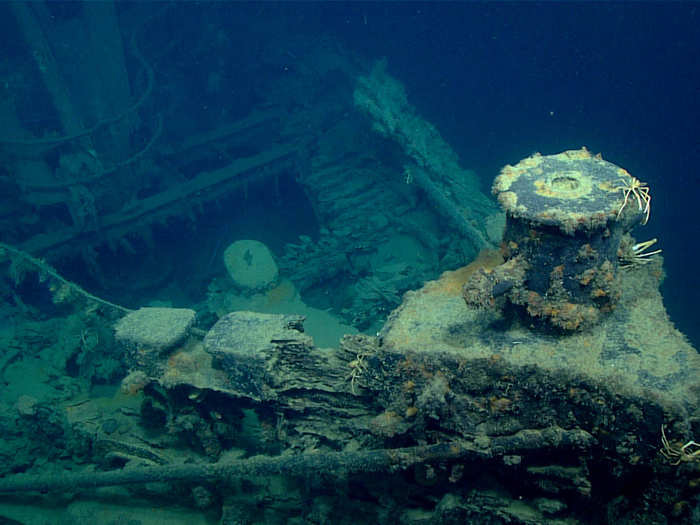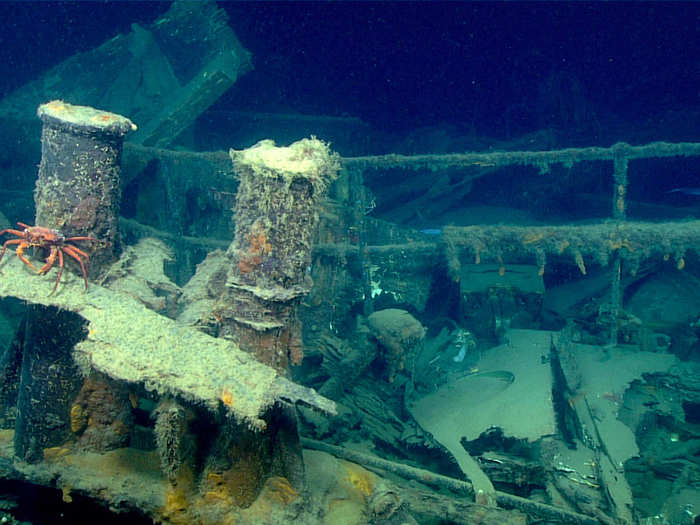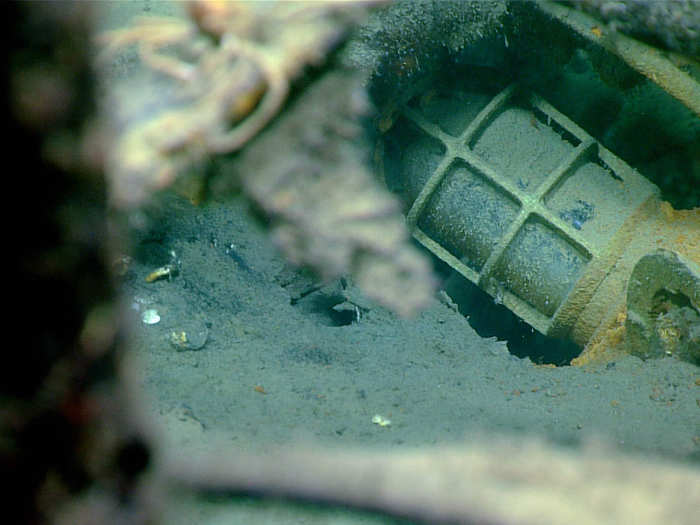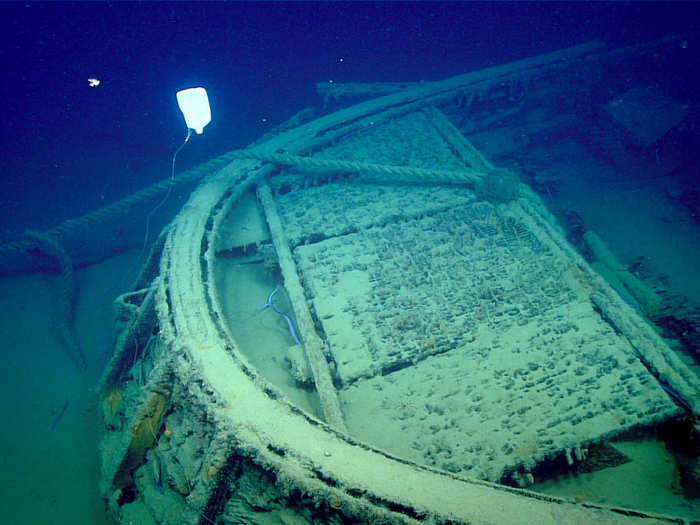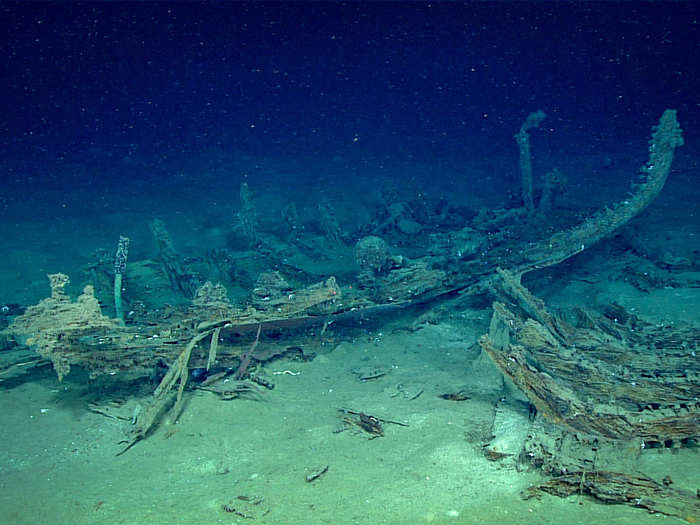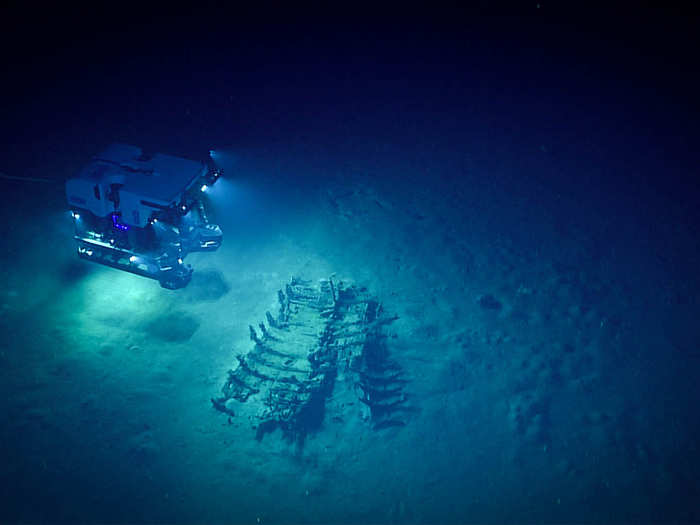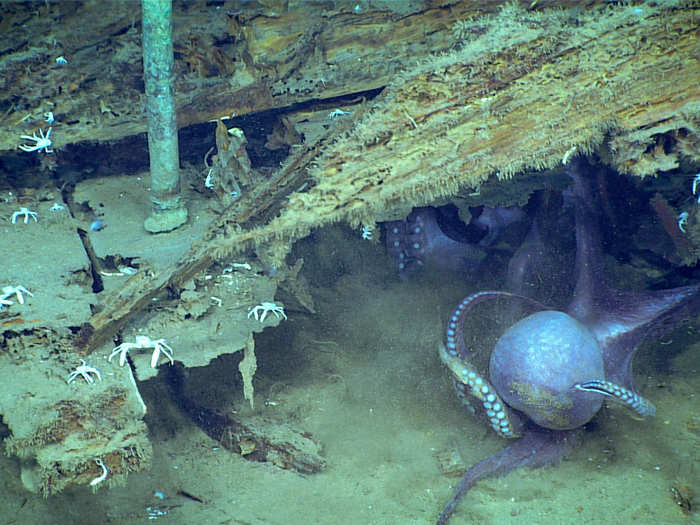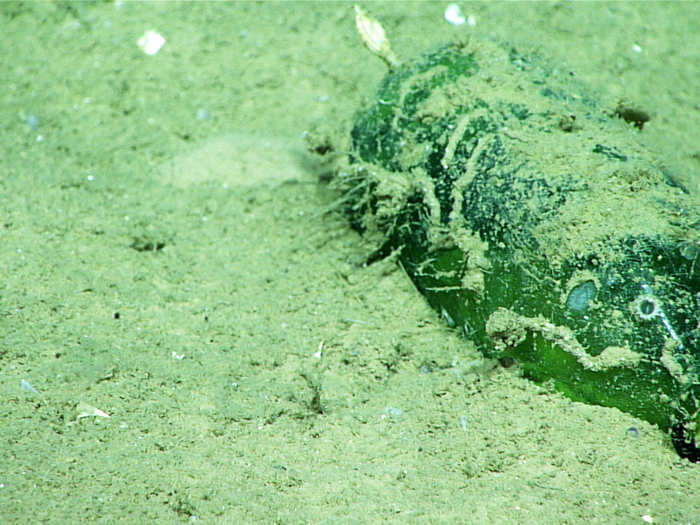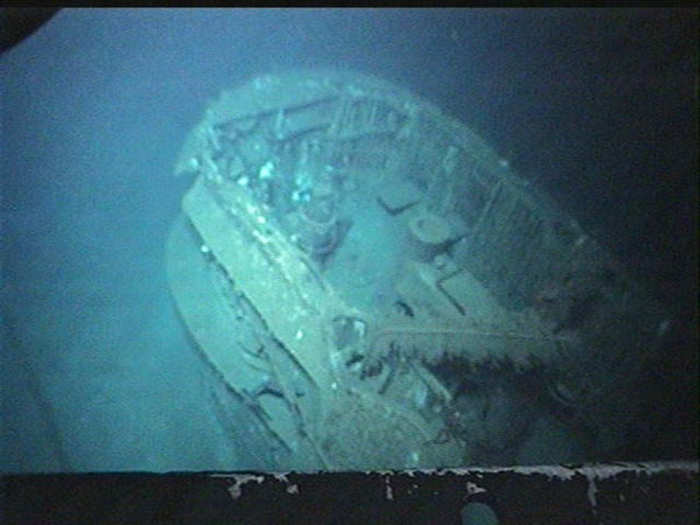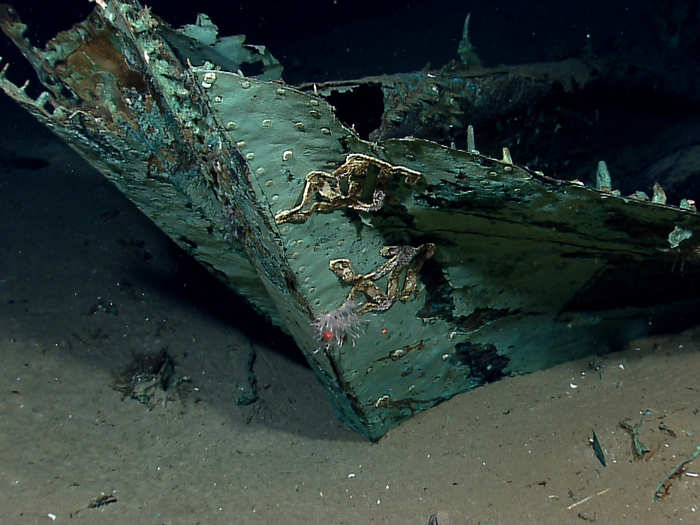On the first dive, the ROV came across this tugboat, named New Hope. The tug went down during a severe tropical storm in 1965, and though the ship was lost, the Coast Guard managed to save everyone on board.
The boat was found at a depth of around 800 meters, or 2,640 feet. Here's how the daring rescue went down, according to NOAA:
"On September 29, 1965, New Hope encountered the strong winds and high seas of Tropical Storm Debbie off the Louisiana coast. With the crew having trouble pumping water out of the hull, the U.S. Coast Guard received a distress call around 1 AM and dispatched an aircraft to deploy a backup pump. Also on board the aircraft was the latest in Search and Rescue technology: a floating radio beacon for use with a radio direction finder. In use, the beacon is dropped close to the distressed vessel to mark its position and to act as a drifting reference.
The seven-member crew boarded a life raft and abandoned the foundering New Hope at 3 AM, just as the aircraft arrived to mark its position with the beacon. Staying on scene until daylight, the aircraft vectored a Coast Guard helicopter to the raft to conduct a safe rescue of the entire crew."
And like the tug, the shipwreck is a haven for marine life. Below decks, the ROV caught a glimpse of a strange sight the researchers dubbed a "Kraken Attack:" Two octopuses fighting for den space.
NOAA estimates there are over 4,000 shipwrecks in the Gulf. Over the years, they've uncovered fascinating finds, like this German U-Boat, which was responsible for sinking military ships by the mouth of the Mississippi River.
The German sub is the only known sub sunk by Allied forces in the Northern part of the Gulf.

